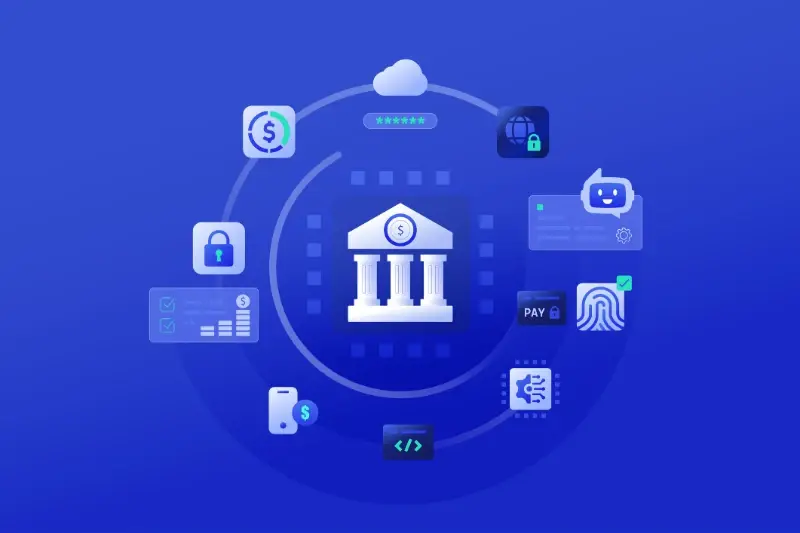Smart Strategies for Bootstrapped App Development on a Budget
Starting your journey into app development with limited resources might feel like trying to build a castle with a handful of bricks. As app developers who've worked with hundreds of bootstrapped founders, we understand the unique challenges you're facing. The good news? You don't need massive funding to create a successful app.
The most innovative solutions often emerge from constraints, not unlimited resources
When we talk about bootstrapped app creation, we're referring to developing your app with existing resources, typically self-funded or with minimal external investment. It's an approach that demands creativity, resourcefulness, and a laser-focused vision - qualities that often lead to more innovative and efficient solutions.
The concept of cost-effective app building isn't about cutting corners; it's about making intelligent choices. Think of it like preparing a gourmet meal on a tight budget - you need to be selective about your ingredients whilst ensuring the final dish remains delicious. Similarly, resource-efficient development requires careful planning and strategic decisions about where to invest your limited resources.
Throughout this guide, we'll explore practical strategies for budget-conscious app design and development that we've seen work firsthand. From adopting a lean development approach to maximising free tools and resources, we'll share insights that can help you navigate the path from idea to launch without breaking the bank. Whether you're a solo entrepreneur or part of a small team, these strategies will help you make the most of your available resources whilst building something truly valuable.
Understanding the Lean Development Mindset
When you're bootstrapping an app, every pound counts. Think of it like planning a round-the-world trip on a shoestring budget - you need to be clever about where you spend your resources. At Glance, we've helped numerous founders turn their app ideas into reality without breaking the bank, and it all starts with embracing the lean development mindset.
What Does 'Lean' Really Mean?
Lean development isn't about cutting corners - it's about being smart with your resources. Imagine you're making a sandwich: instead of buying every condiment in the shop, you start with the essentials that your customers truly want. In app terms, this means focusing on your core features first and avoiding the temptation to add bells and whistles that might look impressive but don't add real value.
Building Your MVP Strategically
Your Minimum Viable Product (MVP) should be just that - minimum yet viable. We often see founders getting caught up in perfecting every detail, when what they really need is to get their core idea into users' hands quickly. Think of it like opening a pop-up shop before investing in a permanent storefront - you're testing the waters while keeping your investment manageable.
The key is to identify your app's 'must-haves' versus 'nice-to-haves'. For instance, if you're building a fitness tracking app, you might start with basic workout logging capabilities rather than implementing advanced social features or AI-powered coaching straight away. This approach not only saves money but also helps you gather valuable user feedback before making bigger investments.
Remember, being lean doesn't mean staying small forever - it means growing sustainably based on real user needs and market demand. Some of today's biggest apps started with humble beginnings; WhatsApp began as a simple status update tool before evolving into the messaging giant we know today.
Essential Tools and Resources for Budget-Conscious Development
When you're bootstrapping an app, every penny counts. The good news is that there's a wealth of cost-effective tools and resources available that can help you create a professional-quality app without emptying your bank account. Let's explore some smart choices for resource-efficient development.
Development Platforms and SDKs
For budget-conscious app creation, consider starting with Flutter or React Native. These cross-platform frameworks let you write code once and deploy to both iOS and Android, effectively cutting your development time in half. Think of it as cooking one meal that satisfies both vegetarians and meat-eaters - efficient and practical!
Essential Tools for Lean Development
Github's free tier offers excellent version control capabilities, while Trello helps manage your project without cost. For design work, Figma's free plan provides most features you'll need for budget-conscious app design. When it comes to testing, Firebase offers a generous free tier that includes crash reporting and analytics.
Remember those Swiss Army knives that seemed to have a tool for everything? That's what these platforms are - versatile, reliable, and cost-effective solutions for bootstrapped projects.
Before investing in paid tools, thoroughly explore the free tiers of professional platforms. Many offer surprisingly robust features that could cover your initial development needs, helping you maintain a lean development approach.
For your backend needs, consider services like MongoDB Atlas or Firebase, which offer free starter plans perfect for MVPs. These platforms scale with your success, meaning you only pay more when your app starts generating revenue - ideal for cost-effective app building.
Smart Design Strategies That Won't Break the Bank
When you're bootstrapping an app, every penny counts. But that doesn't mean your app can't look professional and provide a brilliant user experience. Having guided countless startups through this journey, we've discovered some clever ways to create stunning designs without emptying your wallet.
Start With the Basics Done Right
Think of your app design like furnishing a new flat - you don't need expensive artwork on every wall to make it look welcoming. Start with these budget-friendly fundamentals:
- Use a consistent colour scheme (limit to 2-3 primary colours)
- Stick to two complementary fonts - one for headings, one for body text
- Embrace white space - it's free and makes everything look cleaner
- Utilise existing design systems like Material Design or Apple's Human Interface Guidelines
- Focus on creating a strong, simple logo rather than complex illustrations
Leverage Free and Low-Cost Resources
There's a treasure trove of free design resources available if you know where to look. Sites like Unsplash offer professional-quality photos, while Figma provides free design tools that rival expensive alternatives. Rather than commissioning custom icons, consider using established icon sets like Font Awesome or Material Icons.
Remember, some of the most successful apps started with minimal designs. WhatsApp's initial interface was remarkably simple, yet it didn't stop millions from embracing the app. Focus on solving your users' problems elegantly rather than trying to dazzle them with fancy graphics.
The key is to create a consistent, clean design that feels trustworthy and intuitive. Your users will appreciate an app that works smoothly more than one with flashy animations that slow down their experience.
Efficient Development Practices for Bootstrapped Projects
The true art of resource-efficient development isn't about cutting corners - it's about making every line of code count.
Maximising Development Efficiency
When you're working with limited resources, every development hour needs to count. We've seen countless founders struggle with this balancing act, trying to create something remarkable whilst keeping costs manageable. The good news? There are proven ways to make your development process more efficient without compromising quality.
Start by adopting a modular development approach. Think of it like building with Lego - create reusable components that can serve multiple purposes in your app. This cost-effective app building strategy not only saves time but also makes future updates easier to implement.
Smart Testing and Deployment
One often overlooked aspect of budget-conscious app design is automated testing. While it might seem counterintuitive to invest in testing tools when bootstrapping, they actually save considerable time and resources in the long run. Consider using frameworks like Jest or Cypress, which offer free tiers perfect for startups.
Another vital practice in resource-efficient development is implementing continuous integration (CI). Think of CI as your quality control manager - it automatically checks your code for issues before they become expensive problems. Many platforms offer free CI tools for small teams, making it a brilliant addition to your lean development approach.
Remember to leverage version control effectively. Git isn't just for keeping track of changes; it's also brilliant for experimenting with features without risking your main codebase. This approach allows you to test new ideas efficiently while maintaining a stable product - essential for bootstrapped projects where every minute counts.
Conclusion
Building an app on a bootstrap budget isn't just possible—it's a pathway that many successful founders have travelled before you. By embracing a lean development mindset and implementing the strategies we've discussed, you can bring your app idea to life without requiring massive capital investment.
Remember, some of today's most successful apps started with humble beginnings. WhatsApp began as a simple status-updating app, and Instagram was initially just a location check-in service called Burbn. These examples remind us that success often comes from starting small, learning from user feedback, and growing organically.
The key takeaway is that bootstrapping isn't about cutting corners—it's about being resourceful and strategic. By focusing on essential features, leveraging the right tools, and implementing efficient development practices, you can create a high-quality app that serves your users' needs whilst keeping costs manageable.
Whether you're a solo founder working from your kitchen table in Manchester or part of a small team in Edinburgh, remember that every successful app starts with that first line of code. Don't let budget constraints discourage you from pursuing your vision. Instead, use them as motivation to be more creative, more efficient, and more focused on what truly matters to your users.
Start small, think big, and keep pushing forward. Your bootstrapped app development journey might be challenging, but with the right approach and mindset, you can turn your app idea into a reality without breaking the bank. After all, some of the best innovations come from working within constraints—they force us to think differently and often lead to more elegant solutions.
Share this
Subscribe To Our Blog
You May Also Like
These Related Stories

How To Build Your First Mobile Game Without Going Broke

The True Time Investment Behind Successful Mobile App Development





